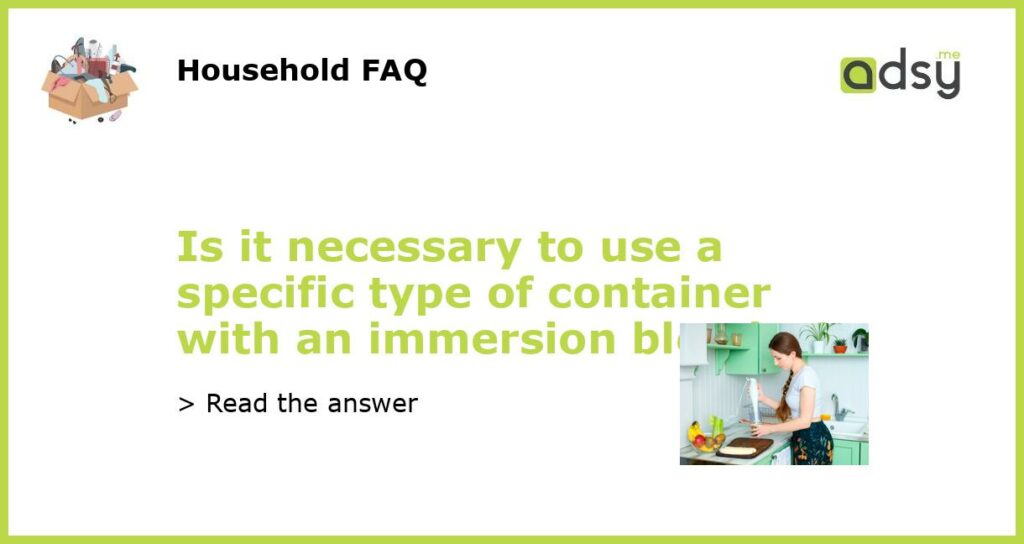Using an immersion blender: An Introduction
An immersion blender, also known as a stick blender or hand blender, is a kitchen tool used for blending ingredients directly in the container in which they are being prepared. The blender’s design allows for easy maneuvering and control, making it an ideal tool for creating smooth soups, sauces, dressings, and purees. However, with the various types of containers available in a kitchen, one question that arises is whether it is necessary to use a specific type of container with an immersion blender.
Types of Containers
The most common types of containers used for blending with an immersion blender are deep and narrow containers such as mixing bowls, pitchers, and pots. However, any container with a flat bottom can be used as long as it is deep enough to accommodate the immersion blender’s blades. It is essential to take into consideration the quantity of ingredients being blended and choose a container that is large enough to prevent splattering.
Container Material
The material of the container can also affect the blending process. Immersion blenders work best with containers made of stainless steel, glass, or plastic. Stainless steel and glass are preferred as they do not scratch easily, and plastic should be made with BPA-free materials to avoid any harmful chemicals. Moreover, it is best to avoid using non-stick or coated containers as they can be scratched or damaged during the blending process.
Benefits of Using a Specific Type of Container
While it is not necessary to use a specific type of container with an immersion blender, certain containers can enhance the blending process. For example, a tall and narrow container can help create a vortex and draw the ingredients towards the blades, resulting in smoother blends. On the other hand, a wide and shallow container may require more stopping and stirring to ensure all the ingredients are blended evenly.
Overall, it is not necessary to use a specific type of container with an immersion blender. However, choosing the appropriate container can make the blending process more efficient and produce smoother results. It is essential to consider the container’s size, material, and shape to achieve the best results. With the right container and technique, an immersion blender can be a versatile tool in any kitchen.






